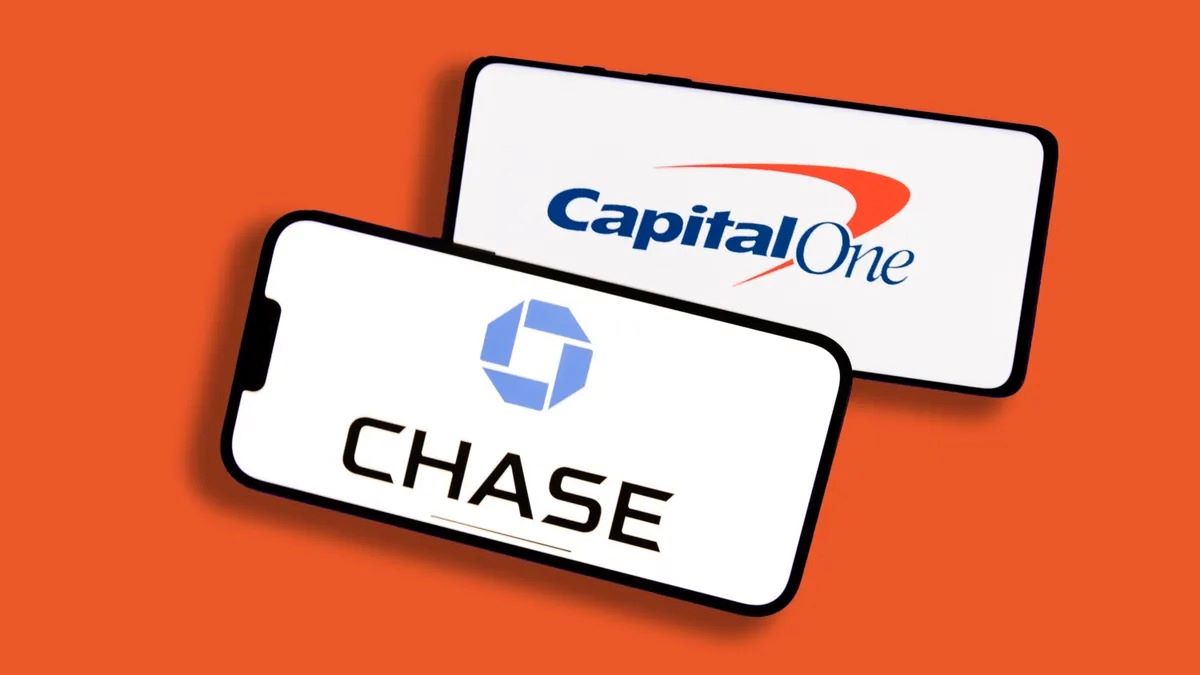

Finance
Why Is My Amex Minimum Payment So High
Published: February 25, 2024
Discover why your Amex minimum payment is unexpectedly high and learn how to manage your finances better. Get expert tips on reducing your Amex minimum payment and improving your financial situation.
(Many of the links in this article redirect to a specific reviewed product. Your purchase of these products through affiliate links helps to generate commission for LiveWell, at no extra cost. Learn more)
Table of Contents
Introduction
When you receive your monthly American Express (Amex) credit card statement, you may be taken aback by the seemingly high minimum payment due. This can be a source of frustration and confusion for many cardholders. Understanding why your Amex minimum payment is so high is crucial for managing your finances effectively and avoiding unnecessary stress.
Minimum payments are a fundamental aspect of credit card usage, and they play a significant role in determining your financial obligations. It’s essential to comprehend the factors that contribute to the calculation of minimum payments and their potential impact on your overall financial well-being. By gaining insight into this aspect of credit card management, you can make informed decisions and develop strategies to handle high minimum payments responsibly.
In this article, we will delve into the reasons behind the seemingly high minimum payments on Amex credit cards. We will explore the factors that influence these payments, the potential consequences of high minimum payments, and effective strategies for managing and mitigating their impact. By the end of this article, you will have a comprehensive understanding of why your Amex minimum payment is high and how to navigate this aspect of credit card management successfully.
Understanding Minimum Payments
Minimum payments represent the lowest amount you are required to pay on your Amex credit card each month to maintain your account in good standing. These payments are typically calculated as a percentage of your outstanding balance, subject to a minimum dollar amount specified by the credit card issuer. It’s important to note that while making the minimum payment by the due date helps you avoid late fees and negative marks on your credit report, it does not prevent the accrual of interest on the remaining balance.
For Amex credit cards, the minimum payment is usually calculated as a percentage of the total balance due. This percentage can vary based on the specific terms of your credit card agreement. It’s common for the minimum payment to be around 1-3% of the outstanding balance, with a minimum dollar amount, such as $25, to ensure that the payment is not unreasonably low.
Understanding the concept of minimum payments is crucial for responsible credit card management. While it may be tempting to pay only the minimum amount due each month, doing so can result in prolonged debt and substantial interest charges. By comprehending the dynamics of minimum payments, cardholders can make informed decisions about their repayment strategies and strive to minimize the long-term financial impact of credit card debt.
Factors Affecting Minimum Payments
Several key factors influence the calculation of minimum payments on American Express credit cards. Understanding these factors is essential for cardholders seeking to manage their financial obligations effectively. The following elements play a significant role in determining the amount of the minimum payment:
- Outstanding Balance: The most prominent factor affecting the minimum payment is the total balance due on the credit card. As the outstanding balance increases, the minimum payment will also rise proportionally, reflecting the higher repayment obligation.
- Interest Rate: The annual percentage rate (APR) applied to the credit card balance directly impacts the minimum payment. Higher interest rates lead to greater interest charges, resulting in an elevated minimum payment to address both the principal balance and the accruing interest.
- Credit Card Terms: The specific terms and conditions outlined in the credit card agreement, including the minimum payment calculation method and any fixed minimum payment amounts, significantly influence the minimum payment requirement.
- Payment History: Cardholders’ payment behavior, particularly any missed or late payments, can trigger penalty fees and contribute to an increase in the minimum payment amount as the issuer seeks to mitigate the perceived risk of late payments.
- Credit Utilization Ratio: The ratio of the credit card balance to the credit limit, known as the credit utilization ratio, can impact the minimum payment. Higher utilization ratios may prompt the issuer to require larger minimum payments to address the perceived risk associated with elevated balances.
By recognizing these factors, Amex cardholders can gain insight into the dynamics of minimum payment calculations and take proactive steps to manage their credit card balances effectively. Awareness of these influences empowers cardholders to make informed financial decisions and adopt strategies to address high minimum payments responsibly.
Impact of High Minimum Payments
High minimum payments on American Express credit cards can have far-reaching implications for cardholders’ financial well-being. Understanding the potential impact of these elevated payment obligations is crucial for making informed decisions and developing effective strategies to mitigate their consequences.
Financial Strain: A substantial minimum payment can place significant strain on a cardholder’s monthly budget, especially if they are already grappling with other financial obligations. The need to allocate a larger portion of available funds to meet the minimum payment requirement can limit the ability to address other essential expenses and savings goals, potentially leading to financial stress and hardship.
Accrued Interest: High minimum payments often signify larger outstanding balances and, consequently, increased interest charges. By primarily focusing on meeting the minimum payment, cardholders may find it challenging to make meaningful progress in reducing their overall credit card debt. This can result in prolonged interest accrual and a more protracted path to achieving financial freedom.
Credit Score Impact: Consistently struggling to manage high minimum payments can have adverse effects on a cardholder’s credit score. Late or missed payments, which may occur when attempting to meet elevated minimum payment requirements, can lead to negative marks on the credit report, potentially lowering the individual’s credit score and impacting their future borrowing capabilities.
Long-Term Debt: A pattern of making only the minimum payment, particularly when the minimum amount is high, can perpetuate long-term credit card debt. This can hinder the cardholder’s ability to achieve financial milestones and may result in a cycle of debt accumulation that becomes increasingly challenging to break.
By recognizing the potential consequences of high minimum payments, Amex cardholders can take proactive measures to address these challenges effectively. Developing a comprehensive understanding of the impact of elevated minimum payments empowers individuals to explore strategic approaches for managing their credit card obligations and working towards financial stability.
Strategies for Managing High Minimum Payments
Effectively managing high minimum payments on American Express credit cards requires a proactive and strategic approach. By implementing the following strategies, cardholders can navigate the challenges posed by elevated minimum payment obligations and work towards improving their financial outlook:
- Payment Prioritization: Prioritize allocating additional funds towards reducing the outstanding credit card balance. By exceeding the minimum payment and targeting the principal balance, cardholders can expedite the reduction of interest charges and work towards alleviating the burden of high minimum payments over time.
- Expense Evaluation: Conduct a comprehensive evaluation of monthly expenses to identify potential areas for cost-cutting and reallocation of funds towards meeting higher minimum payment requirements. Making intentional adjustments to discretionary spending can free up resources to address elevated credit card obligations.
- Communication with Issuer: In cases of financial hardship or unexpected challenges impacting the ability to meet high minimum payments, proactive communication with the credit card issuer can be beneficial. Exploring options for temporary relief, such as hardship programs or revised payment schedules, can provide valuable support during challenging periods.
- Debt Consolidation: Consider exploring debt consolidation options, such as balance transfers to Amex cards with lower interest rates or obtaining a consolidation loan. Consolidating high-interest credit card debt can streamline repayment efforts and potentially reduce the overall minimum payment obligation.
- Financial Planning: Engage in comprehensive financial planning to establish a structured approach towards debt repayment and long-term financial goals. Setting clear objectives and creating a realistic budget can facilitate effective management of high minimum payments and contribute to overall financial stability.
By integrating these strategies into their financial management approach, Amex cardholders can proactively address the challenges associated with high minimum payments and work towards achieving greater financial resilience and freedom. It’s essential to approach these strategies with a long-term perspective, aiming to reduce overall debt burdens and cultivate healthy financial habits for sustained well-being.
Conclusion
Navigating the complexities of high minimum payments on American Express credit cards necessitates a comprehensive understanding of the underlying factors and proactive strategies for effective management. By unraveling the dynamics of minimum payments and their impact, cardholders can empower themselves to make informed financial decisions and cultivate responsible credit card management habits.
Understanding that minimum payments are influenced by the outstanding balance, interest rates, credit card terms, payment history, and credit utilization ratio provides valuable insight into the calculation process. This awareness enables cardholders to anticipate and address potential fluctuations in minimum payment requirements, fostering greater control over their financial obligations.
The impact of high minimum payments extends beyond immediate financial strain, encompassing accrued interest, credit score implications, and the perpetuation of long-term debt. Recognizing these consequences underscores the importance of adopting proactive strategies to manage and mitigate the challenges posed by elevated minimum payment obligations.
By prioritizing principal balance reduction, evaluating expenses, maintaining open communication with the issuer, considering debt consolidation, and engaging in comprehensive financial planning, Amex cardholders can navigate high minimum payments with resilience and determination. These strategies empower individuals to take control of their financial journey, work towards debt reduction, and lay the groundwork for long-term financial stability.
In conclusion, the journey towards effectively managing high minimum payments on Amex credit cards is anchored in knowledge, strategic decision-making, and a commitment to financial well-being. By leveraging these insights and proactive approaches, cardholders can transform the challenge of elevated minimum payments into an opportunity for financial empowerment and sustainable debt management.














